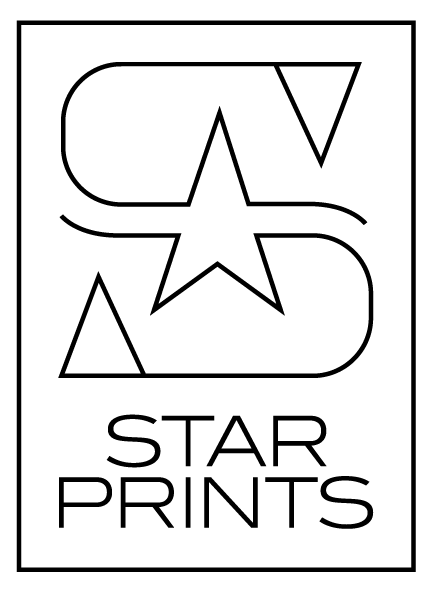Starprints
Print 'Go Bag' - Paul du Bois-Reymond
Print 'Go Bag' - Paul du Bois-Reymond
Kan beschikbaarheid voor afhalen niet laden
De gouache op papier 'Go Bag' (2024) van kunstenaar Paul du Bois-Reymond, is exclusief als print in gelimiteerde oplage verkrijgbaar. Op Photo Rag Hahnemühle papier, alleen als print of ingelijst met passe-partout.
Paul du Bois-Reymond (Amsterdam/Berlijn) is een kunstenaar, muzikant en ontwerper die woont en werkt in Amsterdam. Hij studeerde aan de Rietveld Academie (1992-1996) en was medeoprichter van het beruchte DEPT, later Machine Design Collectief. In 2018 richtte hij de Amsterdamse band OWN op.
De schilderijen van Paul du Bois-Reymond zijn landschappen van surrealistisch welbehagen. Ze worden bevolkt door kunstmatige, ogenschijnlijk levenloze objecten. Digitale citaten: Google resultaten, ai blurps of fragmenten van iPhone-foto's.
De afgebeelde voorwerpen, door hun verschijningsvorm vaak geassocieerd met een aura van luxe of succes, worden door middel van oliepastel en verf van het digitale naar het fysieke getransponeerd.
De tactiliteit wordt geherintroduceerd, een wedergeboorte in het analoge domein wordt daarmee mogelijk gemaakt. Er ontstaat een choreografie in de composities die de verschillende onderdelen tot leven lijkt te wekken. De ruimtes waarin dit plaats vind lijken geen duidelijke begrenzing te hebben buiten die van het doek of papier, waardoor zowel de schaal als het tijdsverloop van de afgebeelde scenes worden bevraagd.
De werken fungeren als post consumerism snapshots; restanten van een wereld die wij nu nog ervaren als de onze. Denkbeeldig ruimte afval, of delen van oude harddisks die onder een spreekwoordelijk vergrootglas worden gelegd. Door fragmenten van deze werkelijkheid te deconstrueren en ze op neokubistische wijze op het doek te reconstrueren, zet du Bois-Reymond ons aan om de relatie tussen digitaal en fysiek te heroverwegen. Het schildertechnische proces versterkt de formele kwaliteit van de objecten, en vergroot daarmee hun aantrekkingskracht. De romige oppervlakken, de reflecties en overdreven kleuren worden plotseling sensueel en uitnodigend.
Dit proces van scherpe, bijna pop-arrogantie trekt hun schaamteloze aantrekkingskracht in twijfel: waarom zijn deze materialen zo aantrekkelijk? Waarom verlangen we ernaar en wat zegt dat over ons tijdperk?
The gouache on paper 'Go Bag' by artist Paul du Bois-Reymond, available exclusively as a print in an edition. On Photo Rag Hahnemühle paper, only as a print or framed with passe-partout.
Paul du Bois-Reymond (Amsterdam/Berlin) is an artist, musician and designer who lives and works in Amsterdam.
He studied at the Rietveld Academy of the arts (1992-1996) and was co-founder of the infamous DEPT, later Machine design collectives. In 2018 he co-founded the Amsterdam based band OWN.
The paintings of Paul du Bois-Reymond are landscapes of surrealistic pleasure. They are populated by artificial, seemingly lifeless objects. Digital quotes: Google results, ai blurps or fragments of iPhone photos. The depicted objects, often associated with an aura of luxury or success due to their appearance, are transposed from the digital to the physical by means of oil pastel and paint.
Tactility is reintroduced, a rebirth in the analogue domain is thus made possible. A choreography is created in the compositions that seems to bring the various components to life. The spaces in which this takes place seem to have no clear boundaries beyond those of the canvas or paper, which questions both the scale and the time course of the depicted scenes.
The works function as post-consumerism snapshots; remnants of a world that we still experience as ours. Imaginary space waste, or parts of old hard drives that are put under a proverbial magnifying glass. By deconstructing fragments of this reality and reconstructing them on canvas in a neo-cubist manner, du Bois-Reymond encourages us to reconsider the relationship between digital and physical. The painting process enhances the formal quality of the objects, thereby increasing their appeal. The creamy surfaces, the reflections and the exaggerated colours suddenly become sensual and inviting. This process of sharp, almost pop arrogance questions their unashamed appeal: why are these materials so attractive? Why do we desire them and what does that say about our era?
Share




